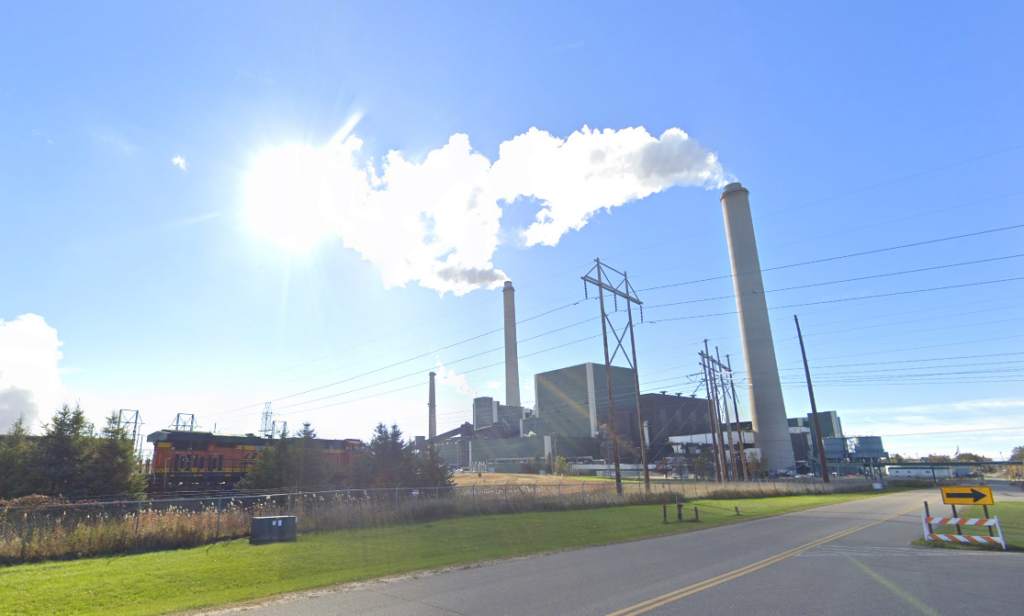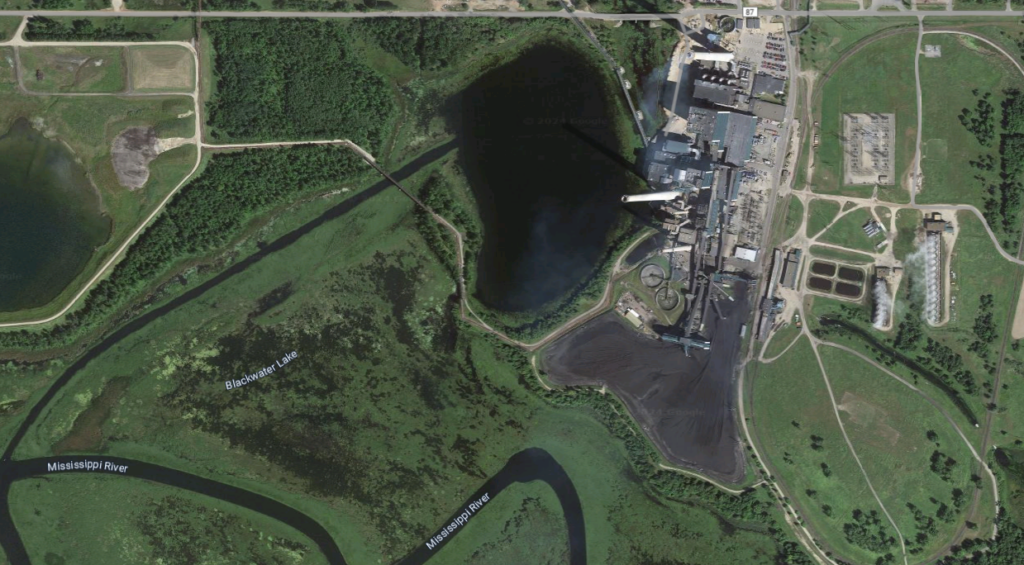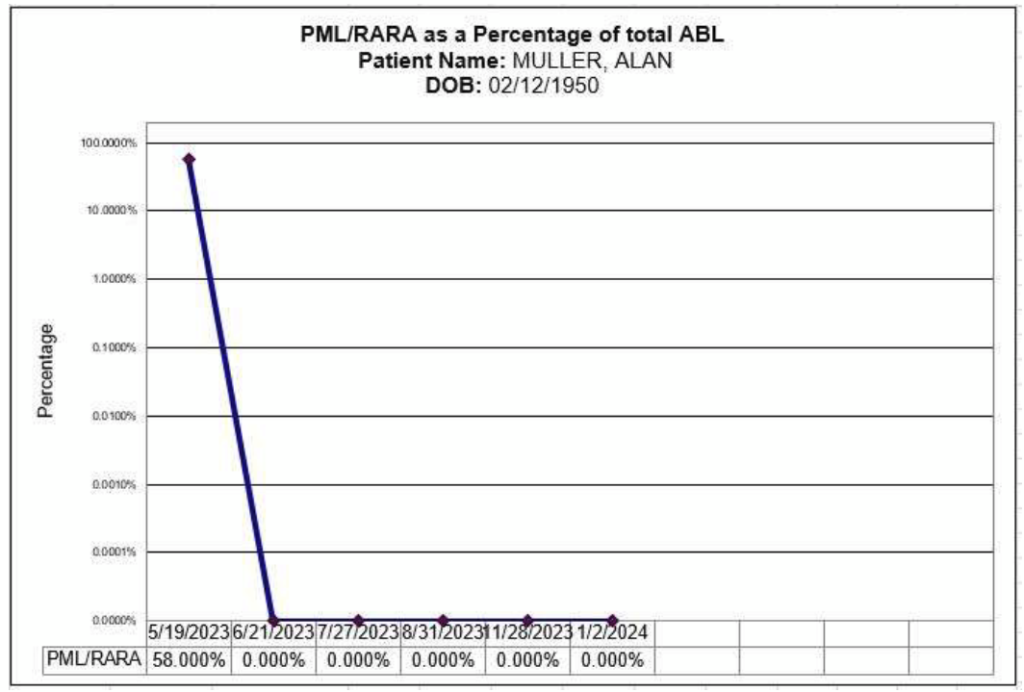Minnesota Power spills ~ million gallons of coal ash wastewater
July 17th, 2024
Great, just great. “About” a million gallons of Minnesota Power’s Boswell coal plant’s coal ash wastewater dumped into Blackwater Lake (appropriate name!), a pond connected to the Mississippi River, a pond where the plant’s cooling water is drawn from, and also a pond where people fish!
The good news is that MP didn’t do an Xcel and wait for MONTHS to disclose. It appears that MP got on the horn almost instantly after the spill was discovered and reported it.
There’s supposedly a press release, but it’s not posted on their “Press Release” page, so I asked about it. MP did get back to me and shared its statement — THANK YOU!
From KAXE:
1M gallons of coal ash wastewater spilled at Cohasset coal plant
Here’s what the STrib has to say:
One million gallons of coal ash wastewater spill at Minnesota Power coal plant
By Walker Orenstein and Chloe Johnson Star Tribune
MPCA is investigating the spill, spokeswoman Andrea Cournoyer said in a statement.
Only 25 more days of Leukemia treatment!
February 2nd, 2024
Acute Promyleocytic Leukemia sucks, but as sucky things go, this hasn’t been so bad.
Today we had another confab with the Leukemia “fellow,” Dr. Premji, this one in person down in Rochester. She’s very cool, and we’re impressed. Alan’s been getting the best of care imaginable. He’s in the final “cycle” which will be winding up near month’s end. WHAT A RELIEF!!!
We got a look at what’s next, after finishing this EIGHT MONTH LONG round of daily treatment. It’s on a rotating basis back and forth between one cycle with 2 weeks of IV arsenic (arsenic on weekdays) and oral ATRA everyday and then 2 weeks of arsenic only (on weekdays); and the other cycle of 2 weeks of oral ATRA only and then 2 weeks off both. Eight alternating cycles, beginning in July after his June 23rd discharge, and at long last, the last infusion is February 27. TWENTY FIVE DAYS TO GO!
After treatment ends, Dr. Premji said it would be a few months until Alan’s immune system builds up after this extreme treatment, so probably June, but with COVID running rampant again, it’s a good time to be masking and isolating.
Platelets always go down a bit during an arsenic cycle, so no worries, they’ll bounce back! And what an improvement after that initial level of NINE (9) on admission. That rather freaked the doctors out! He’s been in remission since some time in that first blue spike “induction” phase ended, technically in remission on discharge June 23. Outpatient, it’s the “consolidation” phase (no idea why it’s called that), and it’s soon completed.
We’re still waiting on this month’s PML/RARa, should be back in a few days, but here’s verification of the good news, the nasty cells are down to ZERO and have been since early on:
After our March visit, he’ll be scheduled for a visit every 3 months. She said he’s been doing exceptionally well, far better than most, with almost no side effects, mindful that this is not chemo. It’s “treatment,” and always the APL treatment side effects of this are less, not at all debilitating or even uncomfortable, just some weird stuff, occasional headaches, skin falling off!!! We’ve only had one real bump in the road, pneumonia in October, with quick recovery. WHEW!
And after getting back from Rochester, another arsenic infusion today in Red Wing… Can’t wait until we’re done with these Rochester treks, and constant appointments here too, though now at least we know where we’re going in the Rochester tunnels, elevators, and we have quite a few “get out of jail free” cards for the parking lot. Red Wing always takes a long time to get the infusions going, but at least he can get them done here, that helps a lot.
Alan said he’d like another picnic at the Gonda building entrance…
He had to see his doggy, and Mayo wouldn’t let Sadie in, so when weather was good, we had an Indian feast at the door — veggie korma and palak paneer, pakora with lots of coriander chutney, and garlic naan of course. Frankly, that month-plus in the hospital was a rough time I’d rather not relive!
Yup, I’m counting the days until this is OVER! Last arsenic dose, arsenic and ATRA treatment ENDS on February 27th. Another bone marrow biopsy a week later, and meet for our “exit interview” after that.
TWENTY FIVE DAYS TO GO!!!
TVA coal ash spews over Tennessee
December 23rd, 2008
Yesterday the TVA’s Kingston coal plant’s coal ash sludge pit blew a sidewall and spewed all over near Harriman, Tennessee, into the Tennessee River. over 400 acres were covered in sludge. There was at least 2.6 million cubic yards or 500 million gallons of coal ash and an entire watershed is affected. That’s really toxic stuff, coal ash. Lots of heavy metals are left, lots of hazardous chemicals, there’s mercury, lead, arsenic, and is this coal slag also radioactive like much in the Dakotas? How will they deal with this?
IF YOU WERE HIT BY THIS COAL ASH FLOOD- CALL TVA: 865-717-4006
Lots of links now, I’m updating now and then.
It’s now in The Tennessean:
Here’s an article with photos and video:
From WYMT:
Here’s Volunteer TV with some more aerial video (and the odd comment that “The damage is done, all that’s left now is the clean up!” Oh… OK…
From WTVC – Chattanooga:
From WMCTV – Memphis:
They don’t know what caused it and yet say there is no danger from the other sludge pits in the area… say what?
TVA ash pond breach: Resident says area has ‘changed forever’
The sludge has encroached 10 feet farther into his yard than the usual winter pool level, and the scenic landscape is replaced by 15-foot-high piles of ash.
“It’s changed forever, I don’t see how this can be brought back,” Copeland said.
Here’s Dave Cooper’s post on Ruminations from the Distant Hills:
From YouTube, the video from Knoxnews of this disaster (this is a must see):
This could be one of the worst environmental disasters ever. One more example of the dangers and inherent problems with burning coal. Does the TVA have a “get out of jail free” card, like nuclear does in Price-Anderson Act? How can the clean up this mess, and how will the coal plant be held accountable? How will the coal industry prevent this from happening again?
It’s not like this is something new. Thanks to It’s Getting Hot in Here for a look at history, least we forget…
It happened in Martin County, Kentucky, in 2000:
It happened in Logan County, West Virginia, where 125 people died, 1,200+ were injured and over 4,000 were homeless:
I’m looking for updates on this… and I found them — try “TVA” and “flood” and not “TVA” and “coal ash.” Seems it’s not well acknowledged that it’s coal ash!
And here we go national:
SF Chronicle: Dike bursts in Tenn. damaging a dozen homes (AP)
By Josh Flory (Contact)
Tuesday, December 23, 2008The ash that burst out of a TVA retention pond on Monday is the sort of waste that has gotten scrutiny from federal regulators and lawmakers in recent months.
The mixture in question was made of water and fly ash, a fine particle that’s one of the by-products of burning coal to generate electricity. The ash is collected by scrubbers that aim to clean up emissions from power-plant smokestacks, and it includes trace elements of materials like arsenic and lead.
In June, a subcommittee in the U.S. House of Representatives held an oversight hearing to examine how the government should address the health and environmental risks of coal combustion waste, including fly ash.
Mary Fox, an assistant professor in the Department of Health Policy and Management in the Johns Hopkins Bloomberg School of Public Health, testified at this summer’s hearing and said in written testimony that “Risks to human health are increased if people are exposed to coal combustion waste.”
In an interview on Monday, Fox said she was reassured about reports that the Kingston spill was a release of wet ash because that means it wouldn’t have gotten into the air as dust.
Fox said generally the concern about fly ash is in regard to long-term exposures – from leaching into the groundwater, for example – and said that when it comes to a spill, the main exposure issues initially will be for people who are cleaning up the mess.
“If it did impact someone’s home,” she said, “you’d want them to stay away from it and not try to be scooping it up with your own broom and dustpan, that kind of thing. It’s not something that you’d want to try and clean up yourself.”
In addition to state and local authorities, the Environmental Protection Agency also dispatched a coordinator and a contractor to the site. EPA is currently reviewing its regulation of coal combustion waste, including fly ash, and one of the documents involved in that process is a 2007 report which found 24 proven cases of damage to ground or surface water from the disposal of coal combustion wastes.
Lisa Evans, an attorney with Earthjustice, a California-based nonprofit law firm, said that in recent years, ash impoundments also have failed in Pennsylvania and Georgia. “Unfortunately this isn’t an isolated instance,” she said “The surface impoundments are not safe places to keep coal ash in general.”
On the other hand, fly ash can be recycled into something useful. David Goss, executive director of the American Coal Ash Association, said ash that meets certain quality standards can be used as a substitute for Portland cement in concrete, and also has uses including soil and waste stabilization. Goss indicated that heavy metals are usually found only in low concentrations, and that they are diluted when stored in liquid.
While he wasn’t familiar with the exact details of the Kingston spill, Goss said that typically the “levels of these concentrations are low enough not to deem them a public hazard.”









